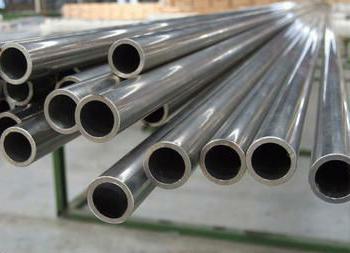Steel is the largest group of metals used, and their marking depends on the classification group.
What are the steel grades
Decoding of the mark begins with the definition of itsmain group for the purpose. The following groups of steels differ: structural, construction, tool, with special properties (heat-resistant, heat-resistant and high-strength).

From structural steels parts are mademachines, rolling, welded structures. Instrumental, as the name implies, is used to produce a machining tool. A special kind of tool steels are high-speed steels, they are designed for machining at higher loads. Structural steels, used mainly for welded structures, are characterized by low (up to 0.25%) carbon content. The composition is close to structural.
Structural steels
In their composition they are divided into doped andcarbon, that is, with special impurities and without them. In alloy steel should contain at least 45% of iron. An important property is the presence of extraneous non-metallic impurities in the resulting alloy - sulfur, phosphorus and others. The less they are contained, the better metal is considered. There are 4 quality groups:
Group | Maximum amount of harmful impurities | Marking |
Ordinary quality | 0.05% | "St" at the beginning of the notation |
Quality | 0.035% | "Steel" before designation; most often not written |
High quality | 0.025% | "A" at the end of the notation |
Very high quality | 0.015% | "Ш" at the end of the notation |
At the end of the notation a type can be putdeoxidation of the alloy (deoxidation - removal of oxygen from the steel): boiling (KP), semi-quiet (PS), quiet (SP). Index "SP" is usually not specified.
In the general case, deciphering steels belonging to the alloyed group can be represented as follows:
- [carbon content] [alloying elements] [deoxidation method] [additional features], where the carbon content is written in hundredths of a percent.
Alloy elements are indicated as a combination of them.letters and quantities in percent. If the content of the element in the alloy is less than a percent, its quantity is not indicated. Currently, the following notation is used for inclusions: H - nickel, X - chrome, C - silicon, titanium - T, manganese - G, Yu - aluminum, etc. For example, steel 09G2S has 0.09% carbon, 2% manganese and silicon in an amount of about 1%. In addition, there are some additional designations of the steel grade, deciphering them as follows:
1. "W" at the beginning - bearing steel.
2. "L" at the end - casting steel.
3. "A" at the beginning - automatic steel.
4. "E" at the beginning - steel electrotechnical.
Separately distinguish steel construction brands.The decryption is as follows: at the beginning the letter "C" is put, after which the yield strength is indicated. The letter "K" means a variant of the chemical composition, "T" - thermal hardening.
Marking of steels with special properties is similar to the marking of structural alloyed.
Tool steel

Before the designation put the letter "Y", thenfollows the proportion of carbon (the minimum amount of carbon should be at least 0.7%). Instrumental steels, as well as constructional ones, are divided into carbon and alloyed, but they have only 2 quality groups - high-quality and high-quality. In the second case, the letter “A” is put in the name at the end of the designation. The letter "G" indicates a high content of manganese. Deciphering grades of steel belonging to the instrumental high-speed cutting is somewhat different. In the first place is the designation of the entire group - the letter "P" (from the English term "rapid" - fast), followed by the number of the main alloying component - tungsten (its letter designation is omitted).

Indication of steel production
For high quality alloys at the enddesignation indicates the method of production of the steel grade, the interpretation of manufacturing methods is presented below. These codes are placed at the end of the designation: VD - vacuum-arc; W - electroslag; EL - electron beam; VI - vacuum-induction.











